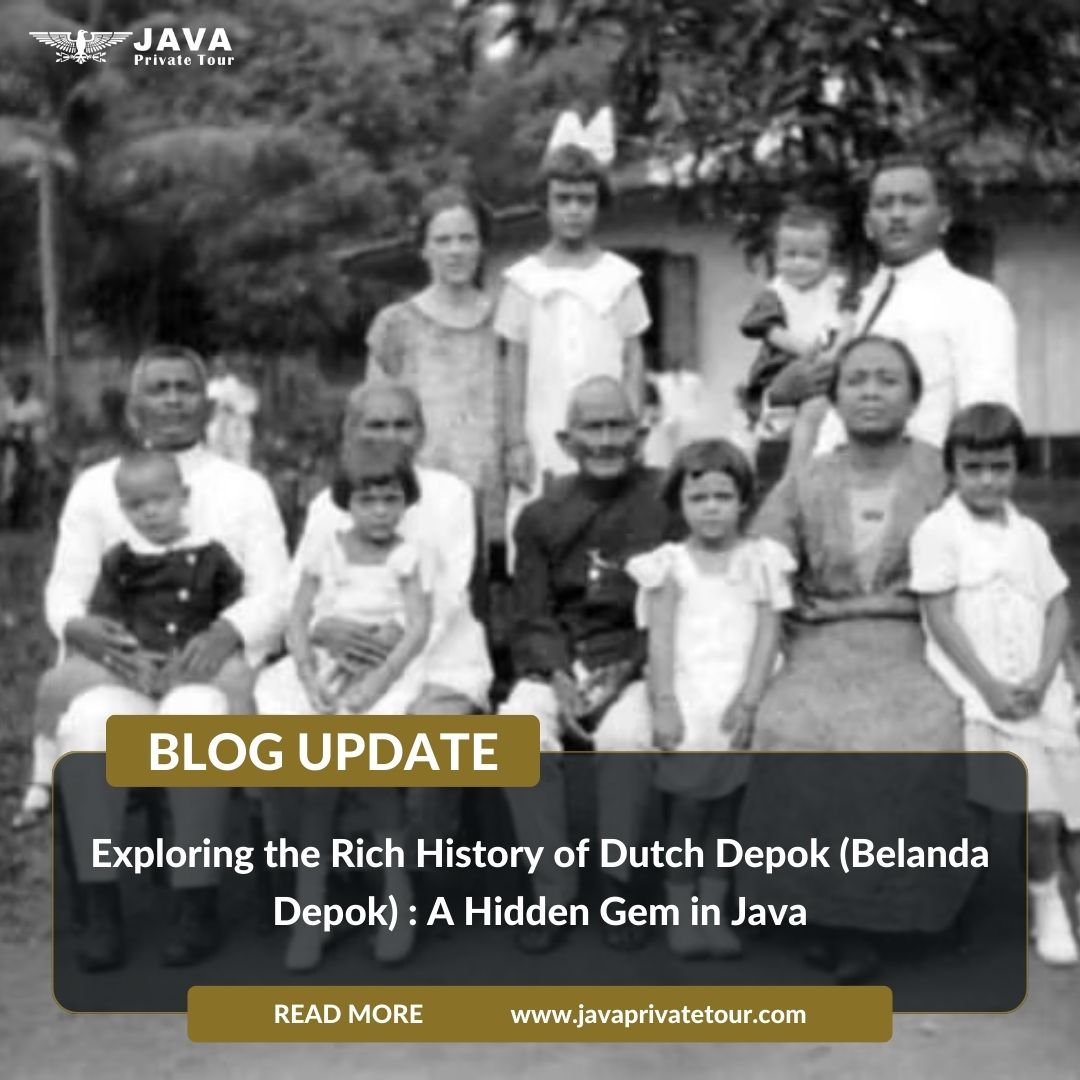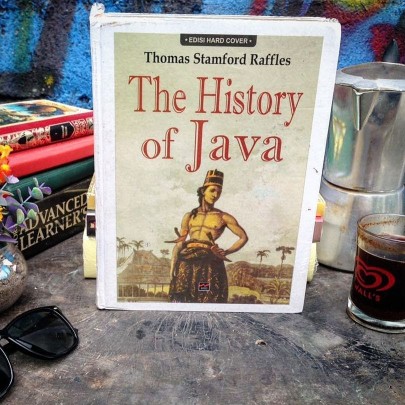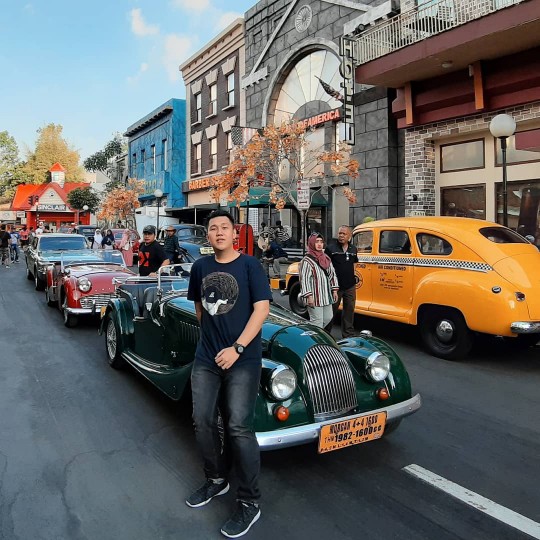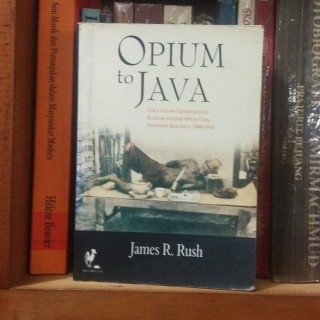javaprivatetour.com – In the heart of Java, where vibrant culture meets colonial heritage, lies a remarkable destination waiting to be discovered. The intriguing area known as Belanda Depok, nestled not far from Depok Lama Station in the city of Depok, West Java, is a fascinating blend of history, architecture, and cultural significance. Java Private Tour invites you to unravel the mysteries of Belanda Depok, a captivating journey into the past.
Unveiling Belanda Depok’s Origins

The term “Belanda Depok” is widely recognized, yet few are familiar with its origin. Located in the Kelurahan Depok, Pancoranmas District, the area boasts a wealth of Dutch colonial remnants. From historic houses featuring classic architecture to the iconic Panus Bridge on Tole Iskandar Street and the Cornelis Chastelein Memorial Monument on Pemuda Street, Dutch Depok is a treasure trove for history enthusiasts.

Noteworthy landmarks include the GPIB Immanuel Church, the Cornelis Chastelein Foundation Building (YLCC), the Presidential Residence of Depok, and the first telephone pole erected by the Dutch in 1900 on Kartini Street. The Panus Bridge, constructed in 1917 by Dutch engineer Andre Laurens, spans the Ciliwung River, connecting Bogor, Depok, and Jakarta. The bridge’s name, Panus, pays homage to Stevanus Leander, a former resident near the bridge.

Depok Lama, as it is now called, houses numerous Dutch colonial buildings, seamlessly blending tropical architecture with distinctive large windows and steep roofs. These architectural wonders reflect the influence of Cornelis Chastelein, a Dutch landowner and former official of the Vereenigde Oostindische Compagnie (VOC).
The Legacy of Cornelis Chastelein

Chastelein, initially an accountant and VOC merchant, transitioned into a landowner due to dissatisfaction with Governor General Willem van Outhoorn’s leadership from 1691 to 1704. Acquiring vast lands in Gambir, Batavia (1693), Srengseng (1695), Mampang (1696), and Depok (1696), Chastelein employed 150 slaves from Bali, South Sulawesi, East Nusa Tenggara, Java, and India to cultivate the 1,244-hectare expanse in Depok.

Despite Chastelein’s passing in 1714, his influence endures through the 12 principal lineages residing in Depok Lama, collectively known as “Belanda Depok (Dutch Depok).” These lineages, including Bacas, Isakh, Jonathans, Jacob, Joseph, Loen, Laurens, Leander, Tholense, Soedira, Samuel, and Zadokh, form a vital part of the area’s genealogy.
The Origin of the Name Depok
The name “Depok” has its origins in the Padjadjaran Kingdom era (1020-1579 AD). Legend has it that during his journey, Prabu Siliwangi stopped in the Beji area of Depok, where he coined the term “Depok” while relaxing by the Ciliwung River. The narrative extends beyond legends as Sultan Ageng Tirtayasa and Pangeran Purba of the Sultanate of Banten traversed Depok on their way to Cirebon. In Beji, one of Pangeran Purba’s followers, Mbah Raden Wujud, established a padepokan, marking the advent of Islam in the region. This padepokan later evolved into the vibrant settlement known as Depok under the Sultanate of Banten.
In 1696, the Dutch East India Company (VOC) official, Cornelis Chastelein, acquired lands in Mampang and Depok Lama for plantations, making a lasting impact on the area’s history. Chastelein’s influence extended to the propagation of Christianity through a Christian Padepokan, coining the term “De Eerste Protestantse Organisatie van Kristenen” (DEPOK), meaning the First Protestant Organization of Christians in Dutch.
Historical Exploration with Java Private Tour
Visitors to Belanda Depok can embark on a historical journey guided by Java Private Tour, a renowned travel companion for foreign tourists exploring Java. Boasting certified local guides proficient in English, Java Private Tour offers a flexible itinerary tailored to clients’ preferences. The service extends beyond expert guides to include a fleet of private vehicles, ranging from sedans and vans to tourism buses.
Java Private Tour’s commitment to excellence is underscored by its professional and licensed crew, including drivers and guides. Endorsed by various embassies of satisfied partner countries, Java Private Tour guarantees a seamless travel experience.
Interest from the Dutch Embassy

The historical significance of Belanda Depok has not gone unnoticed by the Dutch Embassy in Indonesia. Seeking to explore and potentially develop the area as a cultural heritage and historical tourism destination, the Dutch Ambassador, Lambert Grijns, visited Depok Lama. This visit aimed to assess the historical remnants on Pemuda Street and engage with local authorities, including Mayor M. Idris and representatives from the University of Indonesia.
The unique charm of Depok Lama, with its well-preserved colonial buildings and ongoing restoration efforts, presents an appealing attraction for Dutch tourists. Discussions and research collaborations between the Indonesian government, the University of Indonesia, and the Dutch Embassy are underway to solidify Belanda Depok’s status as a cultural heritage and historical tourism hub.
The Future of Dutch Depok
As Java Private Tour continues to facilitate meaningful explorations of Belanda Depok, the prospect of collaborative efforts to restore and promote the historical area is on the horizon. The ongoing dialogues between the local government, educational institutions, and foreign embassies aim to unlock the full potential of Belanda Depok as a cultural gem.
In the spirit of preserving the rich history and heritage of Belanda Depok, these initiatives promise to offer tourists a unique and enlightening experience. Java Private Tour stands as your gateway to unraveling the secrets of Belanda Depok, where the past seamlessly meets the present in a captivating blend of culture and history. Discover the allure of Belanda Depok with Java Private Tour, where every step is a journey through time. BOOK HERE to embark on your personalized exploration today.
You May Also Like
 Exploring the Rich History of Java at History of Java Museum
Exploring the Rich History of Java at History of Java Museum
 Exploring 5 Majestic Dutch Fortresses in Java: A Journey Through History
Exploring 5 Majestic Dutch Fortresses in Java: A Journey Through History
 Exploring the Rich Tapestry of Jakarta’s History and Future
Exploring the Rich Tapestry of Jakarta’s History and Future
 Exploring the Enchantment of Mendut Temple: A Hidden Gem in Java
Exploring the Enchantment of Mendut Temple: A Hidden Gem in Java
 Indonesia’s Rich History: Exploring Ancient Temples and Ruins
Indonesia’s Rich History: Exploring Ancient Temples and Ruins












